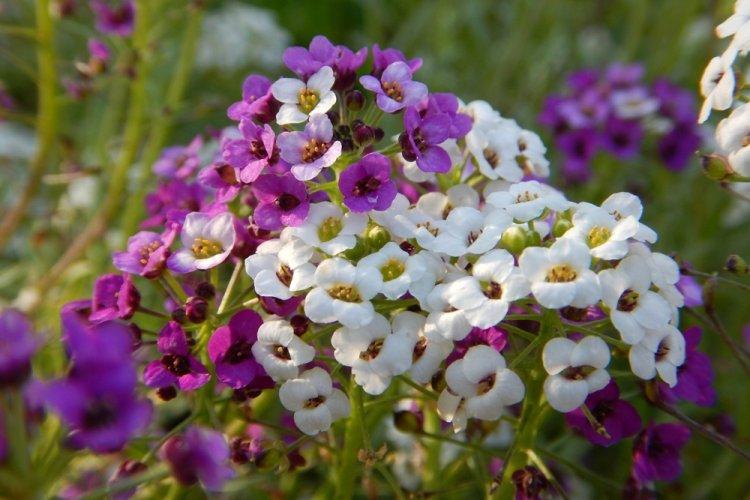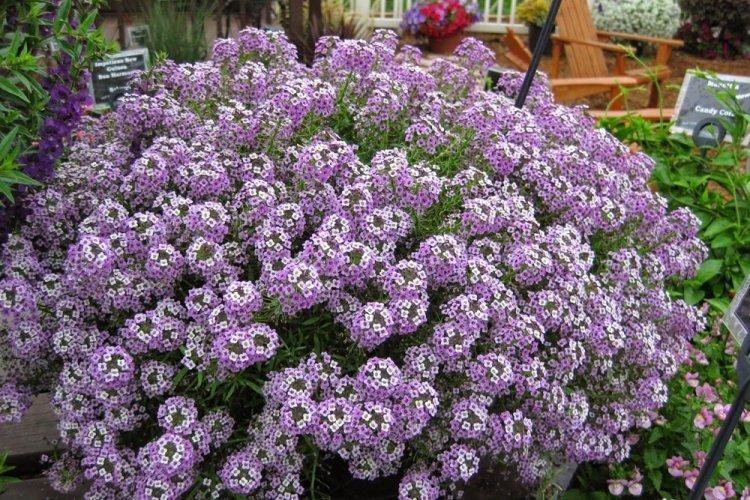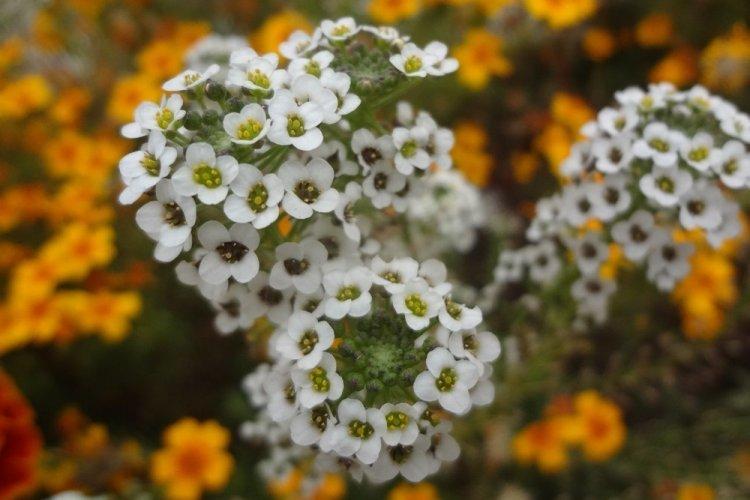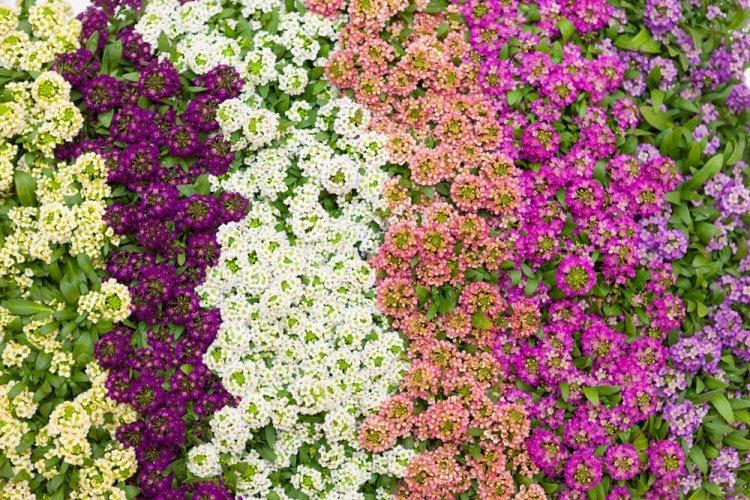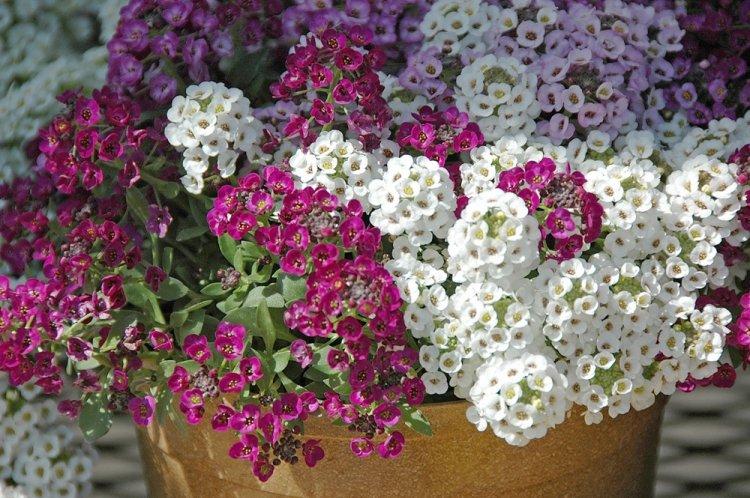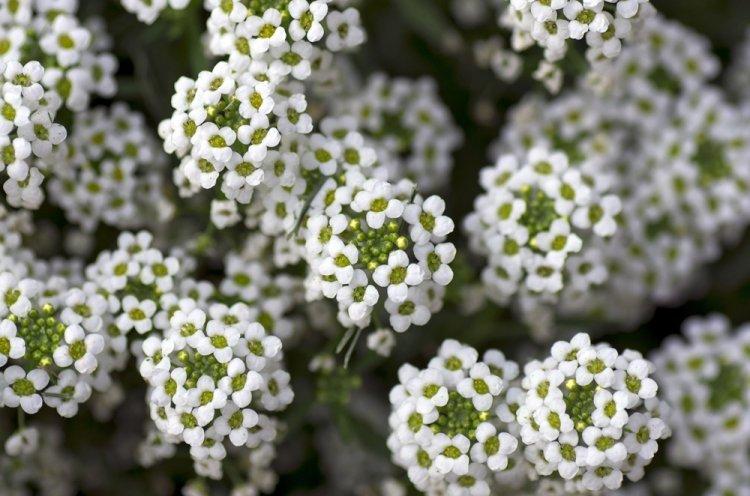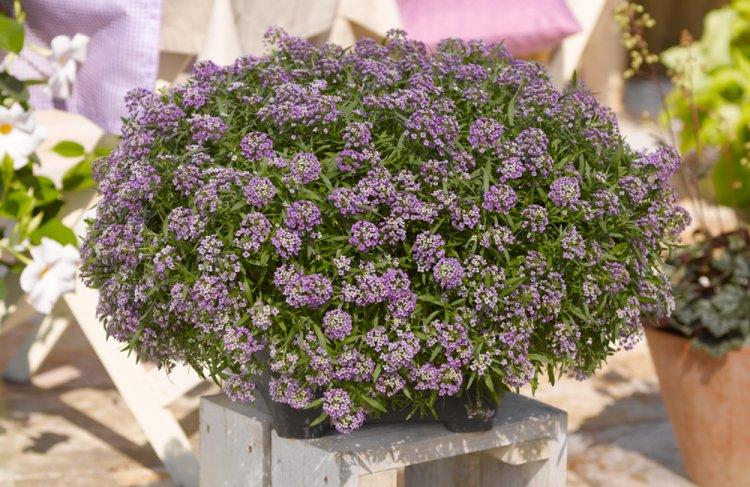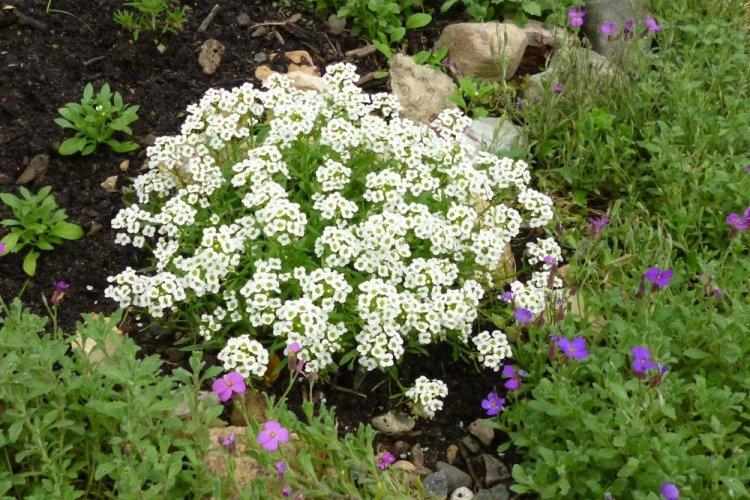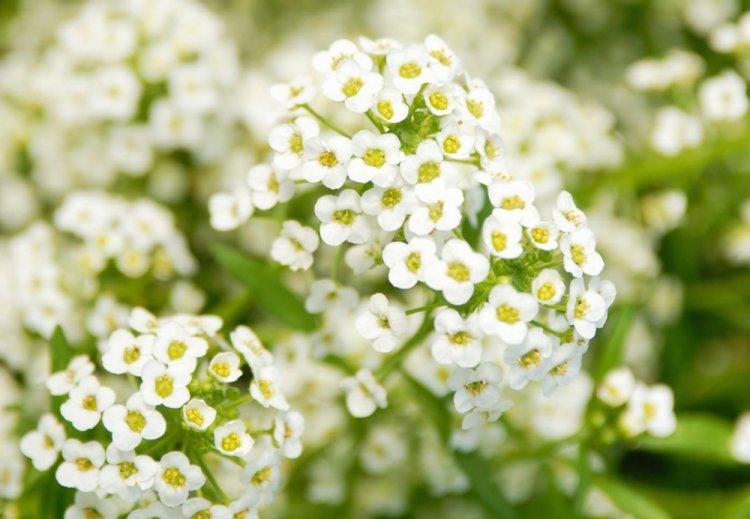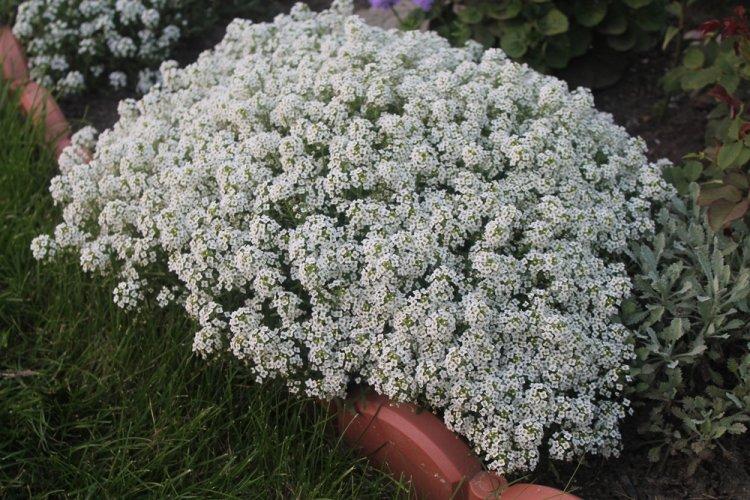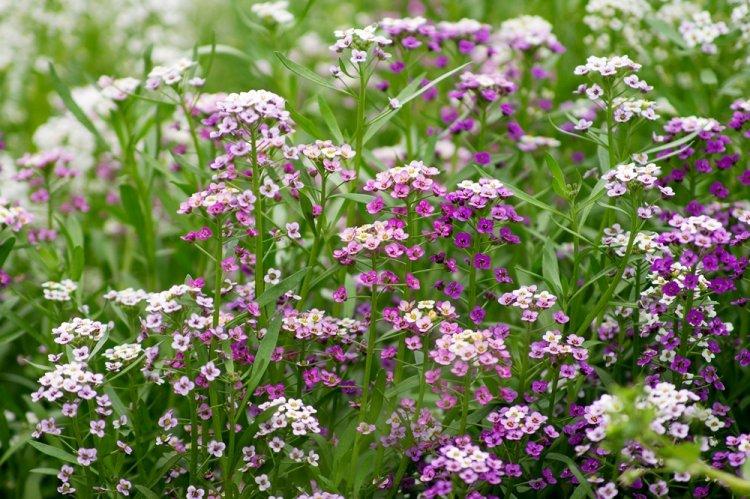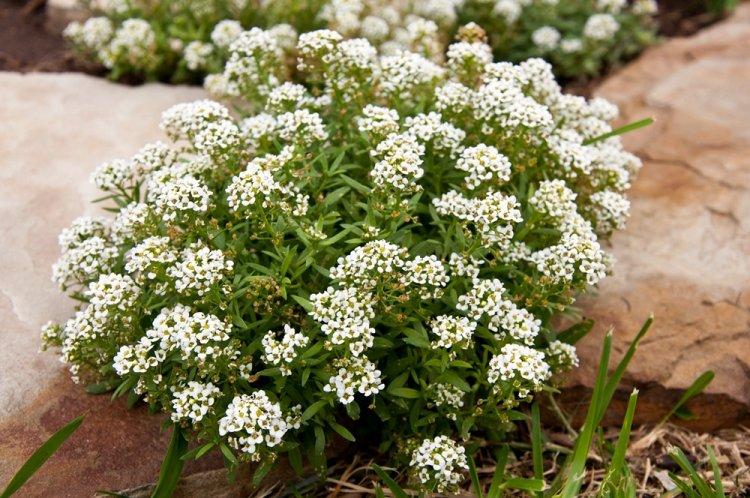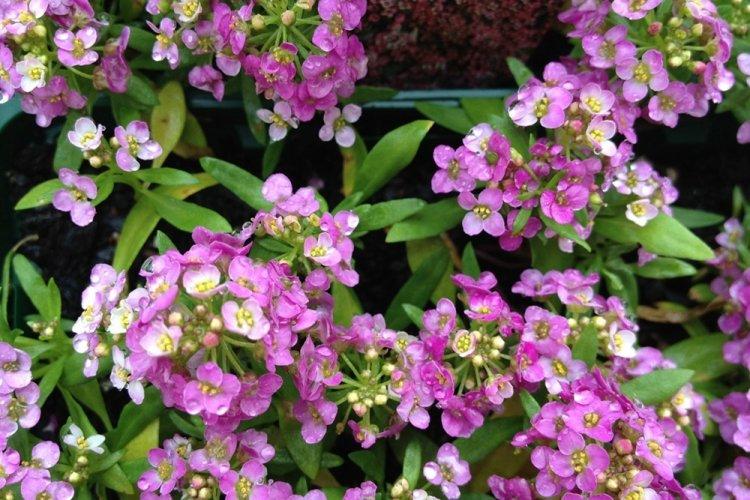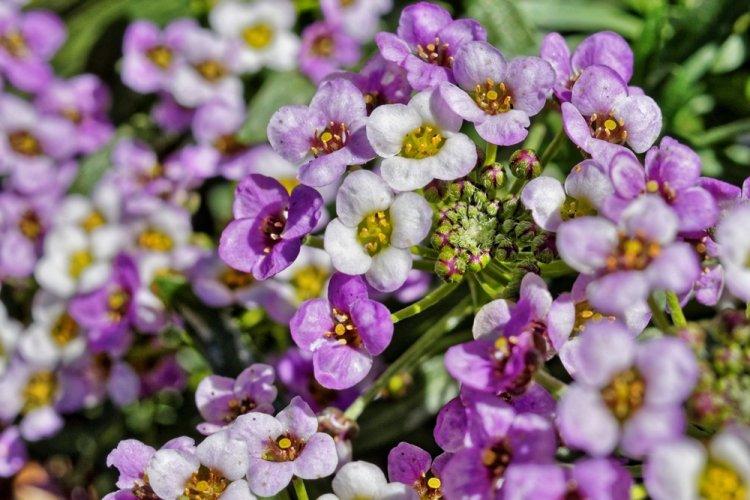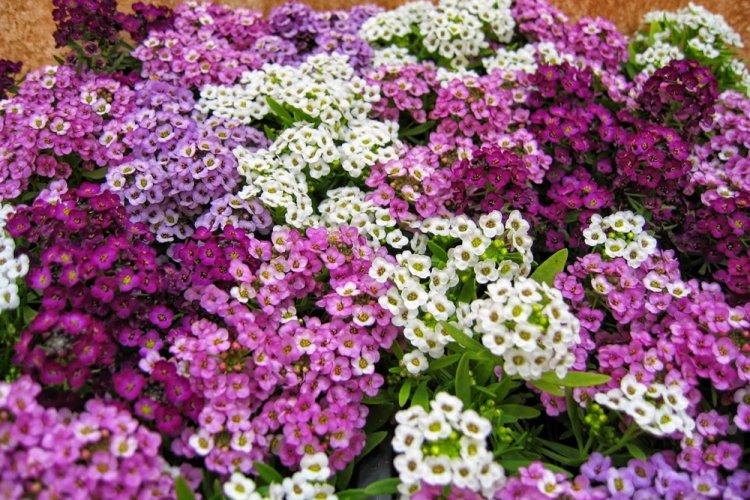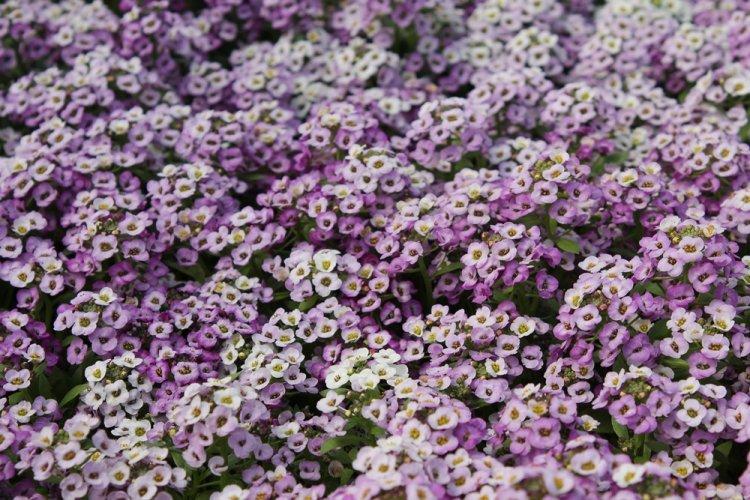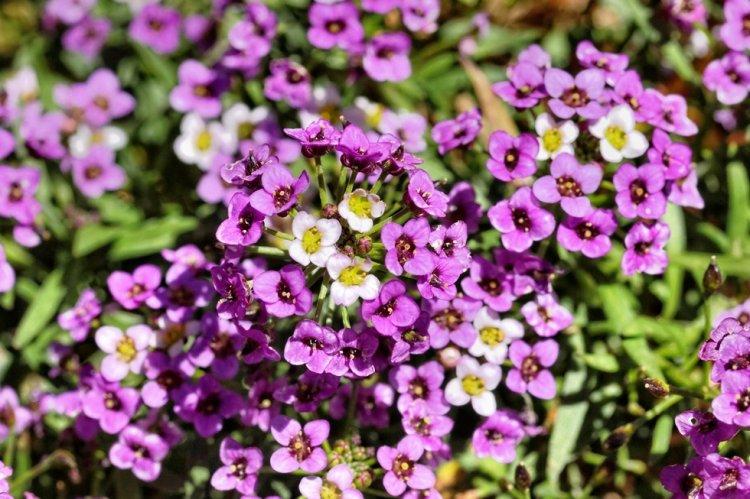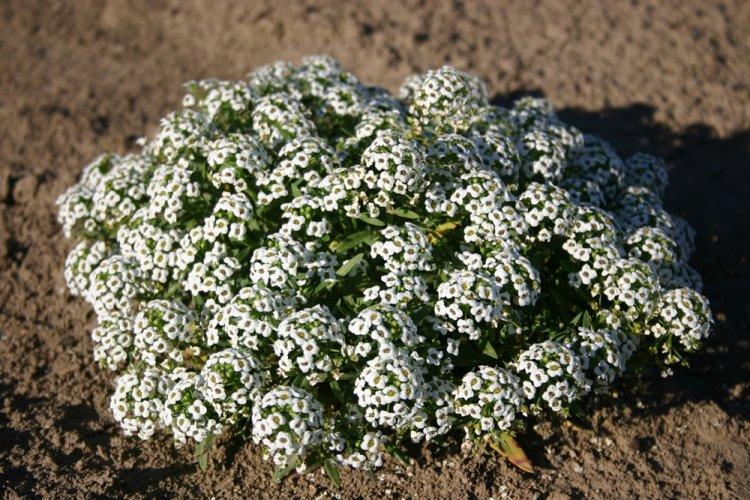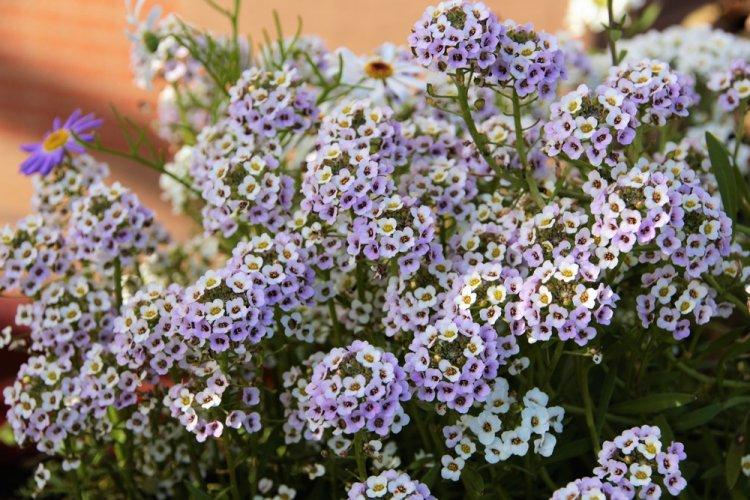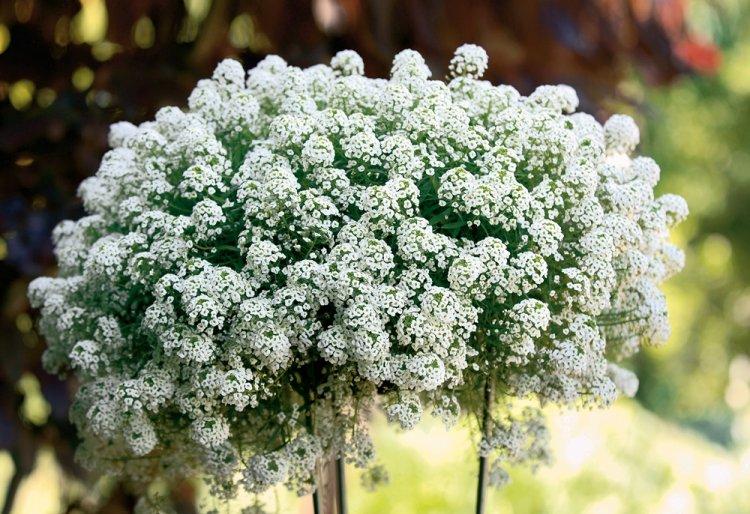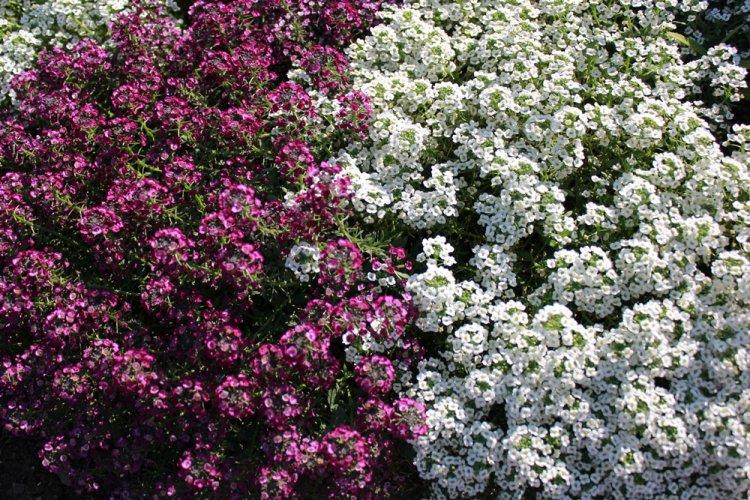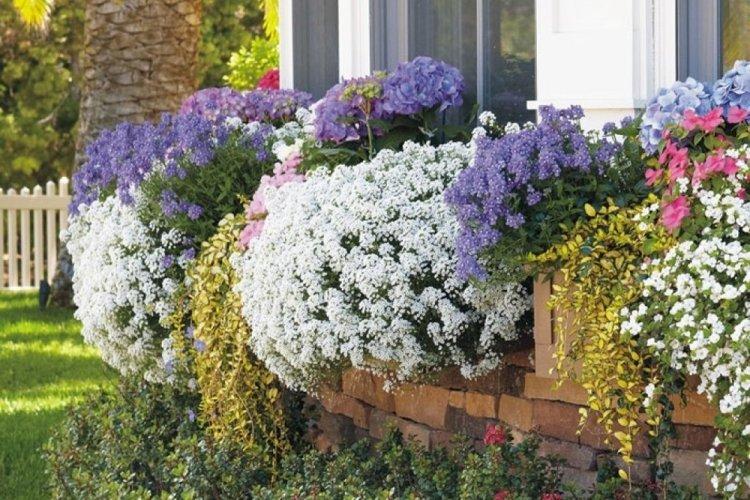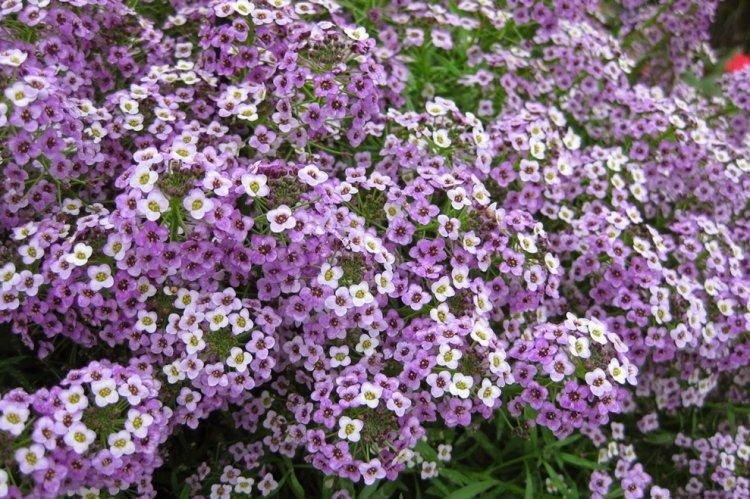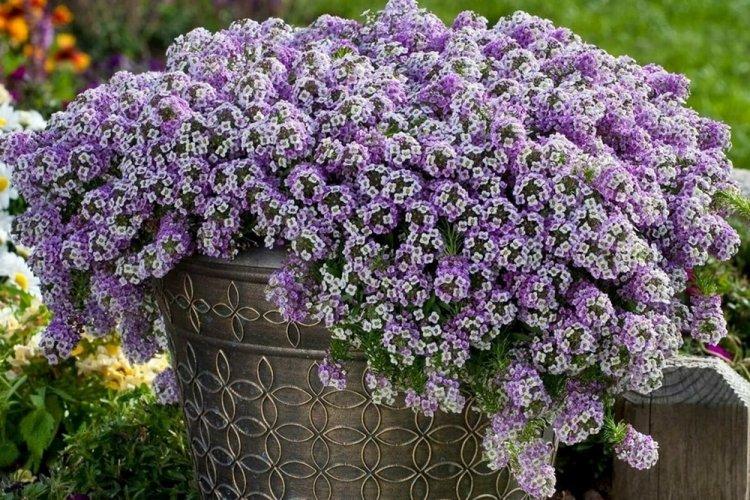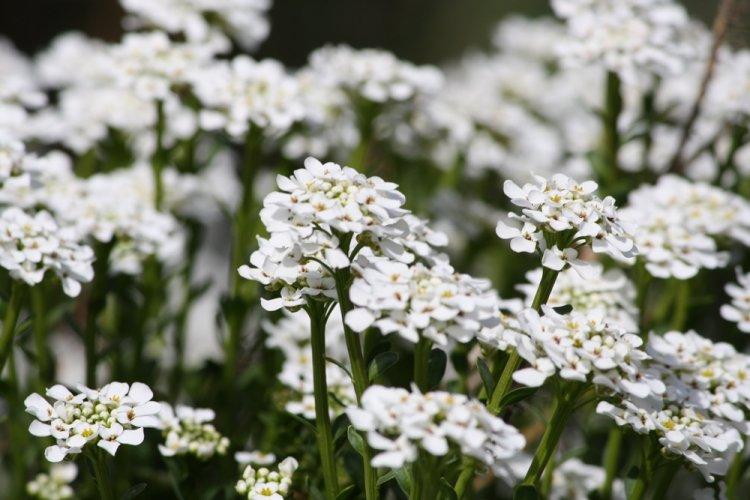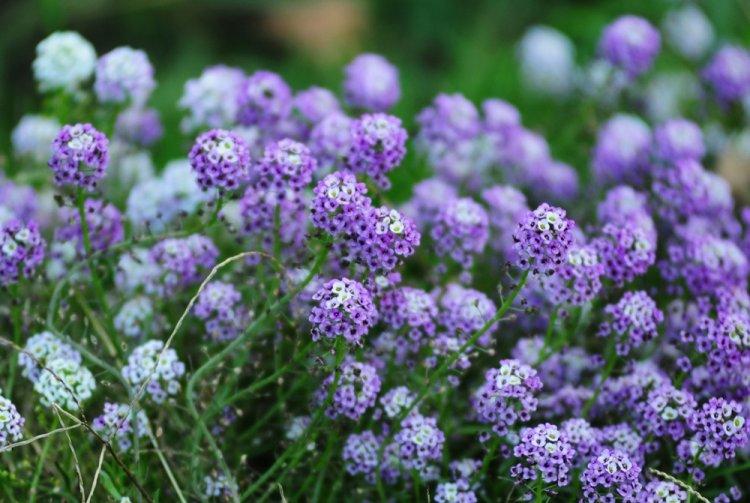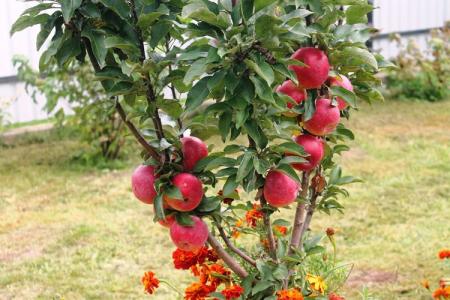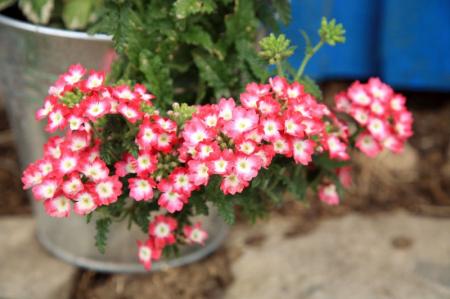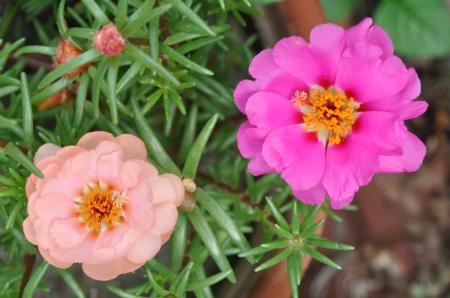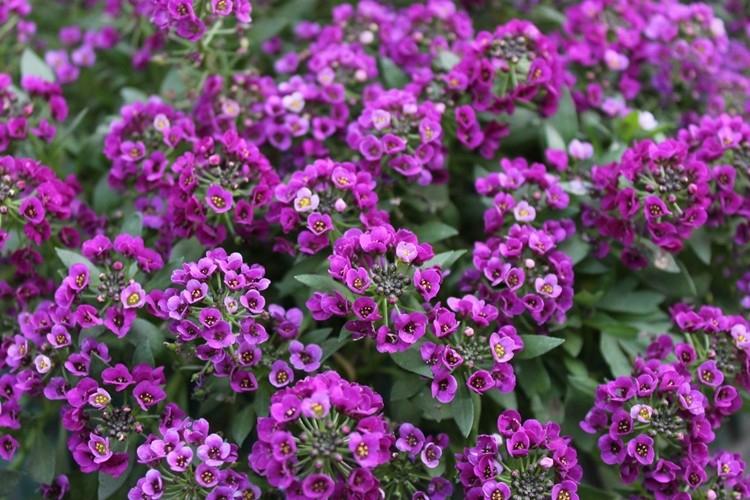
You must have encountered alyssum often along the way, although you may not even know its name. It is so popular with flower growers that it will be more difficult to find a garden in which it does not grow. Now we will tell you what is the secret of such success and how to care for an outlandish flower!
general information
Alyssum is a beautiful herbaceous plant with lush and vigorous flowering. In colloquial speech, he is often called "stone mason" for his habit of settling in the mountains and on the rocks. In its natural environment, it grows in temperate and subtropical latitudes.
Small herbaceous bushes of alyssum grow up to a maximum of half a meter. But they are very branched and thick, so they seem voluminous and create a luxurious lush carpet. The fleshy leaves are densely covered with silvery hairs, which give them a bluish tint.
Alyssums have voluminous racemose inflorescences that attract gardeners. In nature, yellow, white or pink shades in all their variety are more common. The center of the flower resembles a tiny bright peephole, and the honey scent attracts bees.
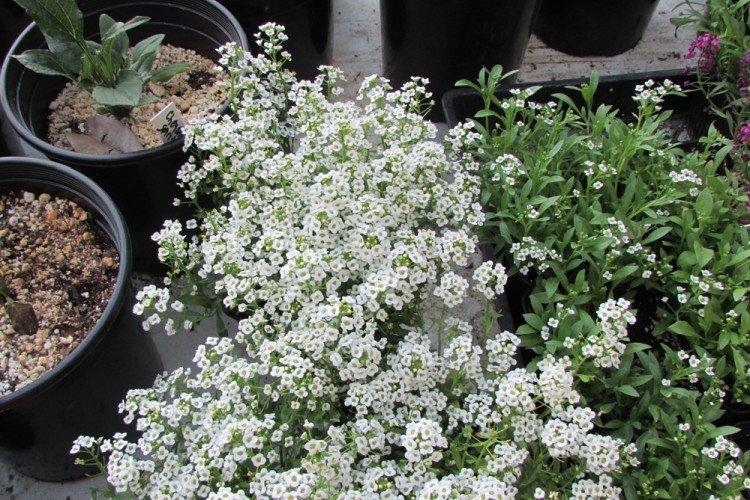
Types of alissum
In our latitudes, three types are especially popular - branchy rocky, compact marine and graceful mountain alyssum. And besides them, there are dozens of varieties of different colors, lovingly bred by breeders.
Alyssum Big Jam
It is a large-flowered variety that is almost twice the size of common species. The most common are lilac, lavender and purple bushes. Alyssum Big Jam tolerates drought and frost equally well, and can bloom even during short frosts.
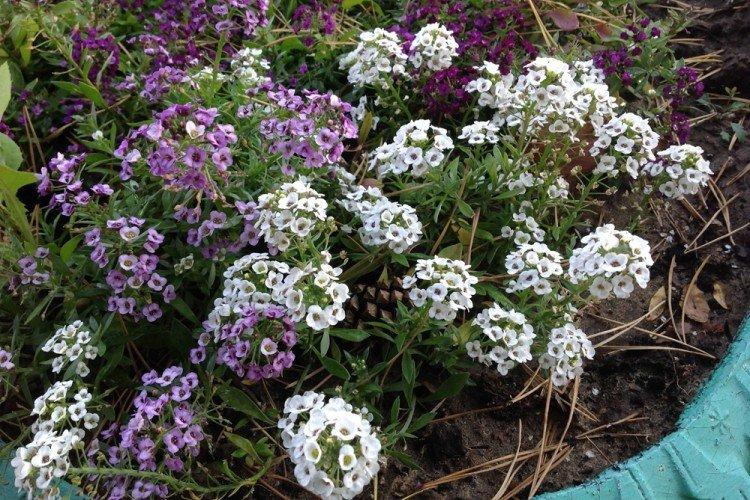
Alyssum "Pink rug"
These are low densely branched bushes up to 12 cm with small pinkish-lilac inflorescences. The leaves appear to be bluish, but in reality it is just a shallow edge. The pink rug is a good choice for balconies, terraces, flower boxes and planters.
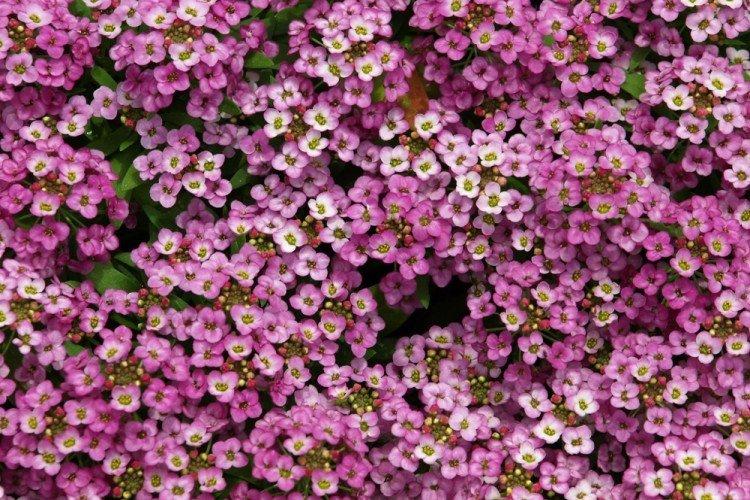
Alyssum Paletta
Alyssum Paletta is very small and compact, in all shades of pink and raspberry. There are even brown and brownish tassels, so you can grow a real variegated carpet. This variety gets along well with any other plants in the garden.
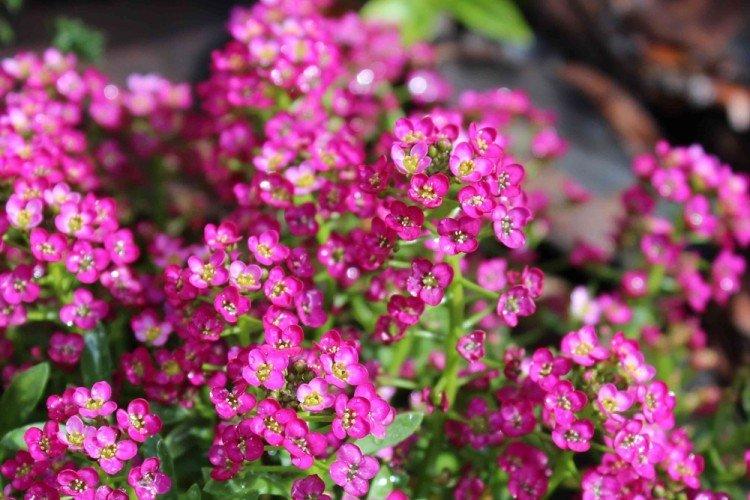
Alissum "Gold placer"
A feature of the Gold Placer is voluminous and beautiful spherical bushes. Shoots with narrow green leaves almost creep along the ground and ideally decorate alpine slides or rocky areas. The name of the variety indicates the bright and rich yellow color of the inflorescences.
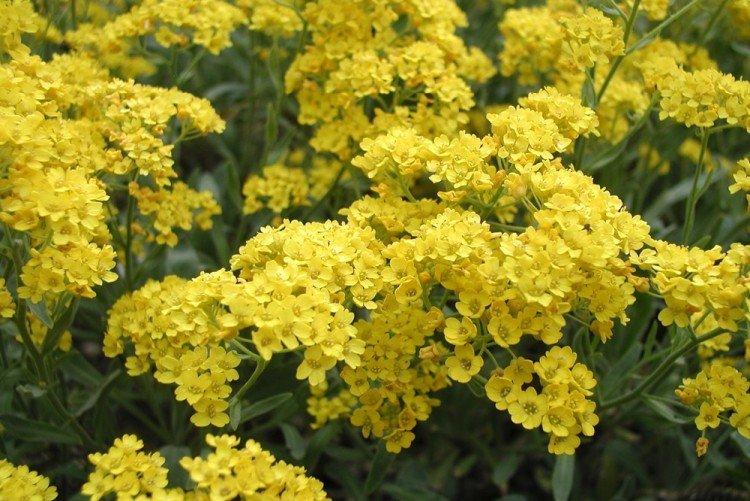
Rock alyssum
These are elastic deciduous rosettes and fluffy racemose inflorescences. This species opens its buds within a month and a half in the spring, and by the end of summer it is again ready to bloom again. Most varieties are notable for all shades of yellow, lemon and gold.
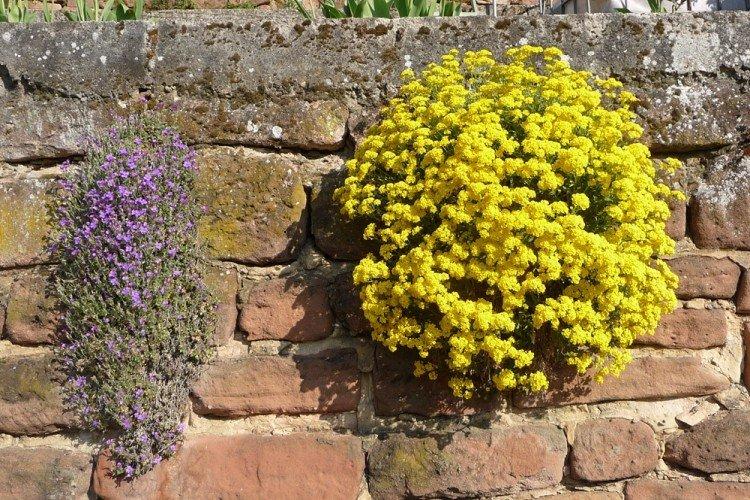
Alyssum Marine
These are dense bushes of many thin twigs and shoots. Its leaves have an unusual silvery hue, and white or lavender clusters captivate with a honey scent. Breeders have developed pink, purple and red varieties. Alyssum marine looks great in flowerpots and hanging compositions.
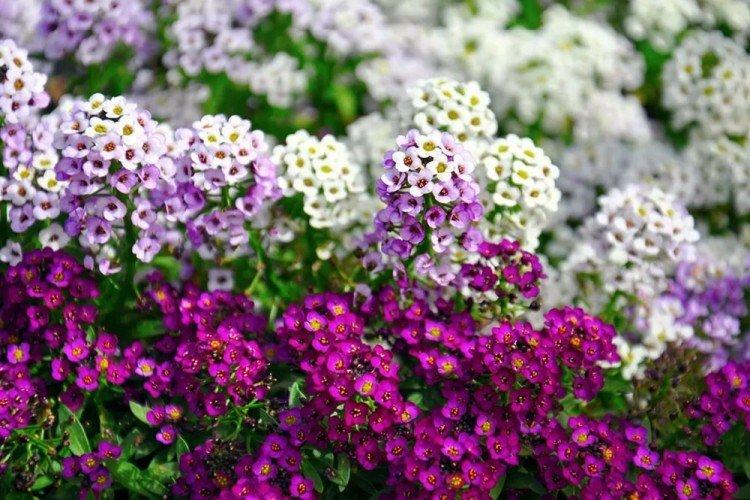
Alissum mountain
It is also called Gmelin, and its feature is increased resistance to frost. The dense edge of the leaves gives them a grayish tint. The height of the bushes reaches 20 cm, and bright yellow flowers bloom in the second half of spring.
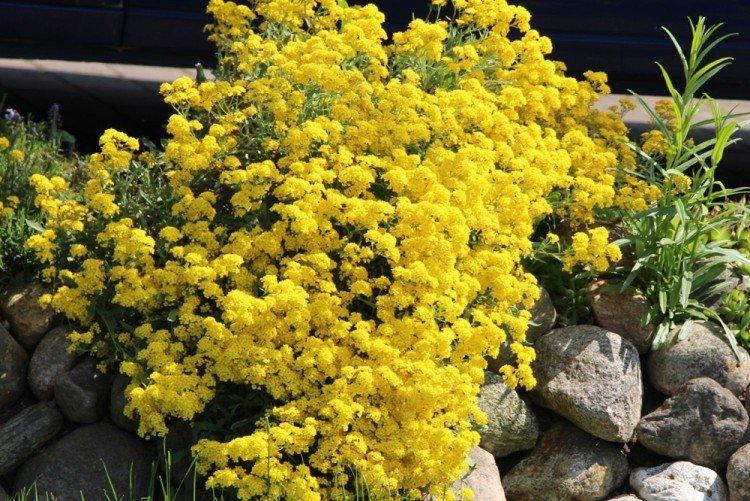
Alyssum care
Alyssum's unpretentiousness is one of the main secrets of its popularity. This is accompanied by a delicate aroma, lush bloom, a variety of varieties and shades. Low alyssums look perfect on flower beds, mixboards and garden compositions.
Temperature and lighting
Alyssum needs a sunny, bright and always well-ventilated place - and he won't be a hassle anymore. A temperature of 10-15 degrees suits him, but even higher is good. Unpretentious plants are not afraid of frosts down to -10 - -15 degrees.
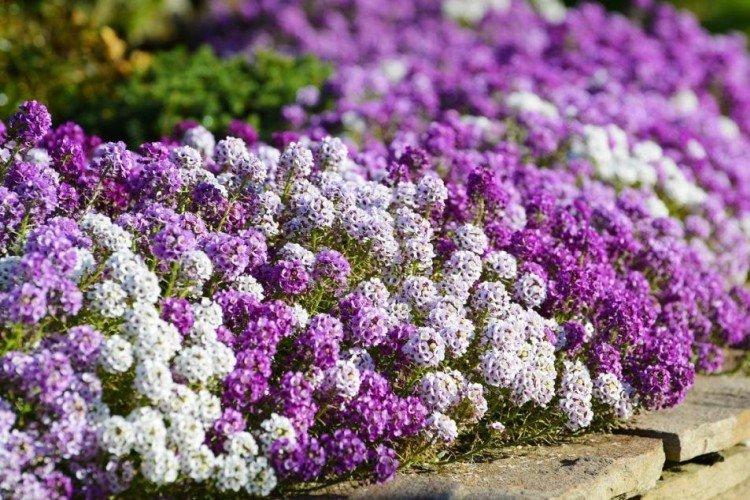
Watering
Alyssum does not tolerate a lack of moisture - and this is almost his only requirement. Be sure to monitor the soil condition throughout the flowering season. There is a simple technique that will help you understand if watering is needed right now: dig the ground 3 cm deep and touch it.
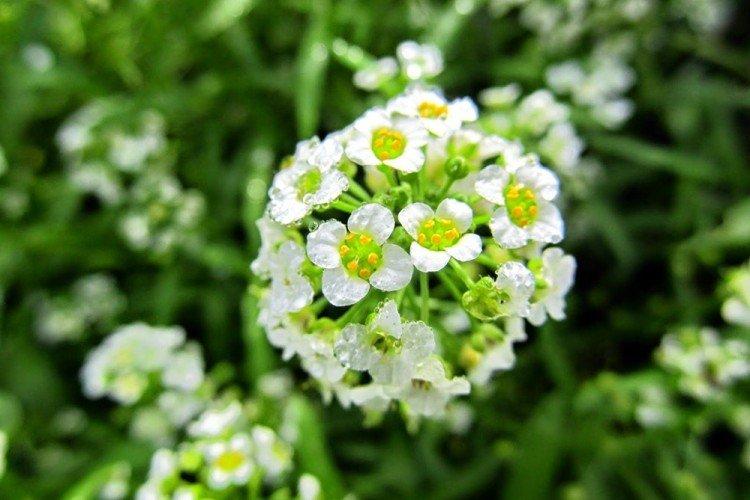
The soil
Alissums grow on almost any soil, because they are even adapted to life on rocks. A neutral or slightly acidic soil is suitable for Lushe, but it must be well drained. The main thing is to avoid swampy and too humid areas. After watering, the soil must be loosened and weeded so that the water does not stagnate.
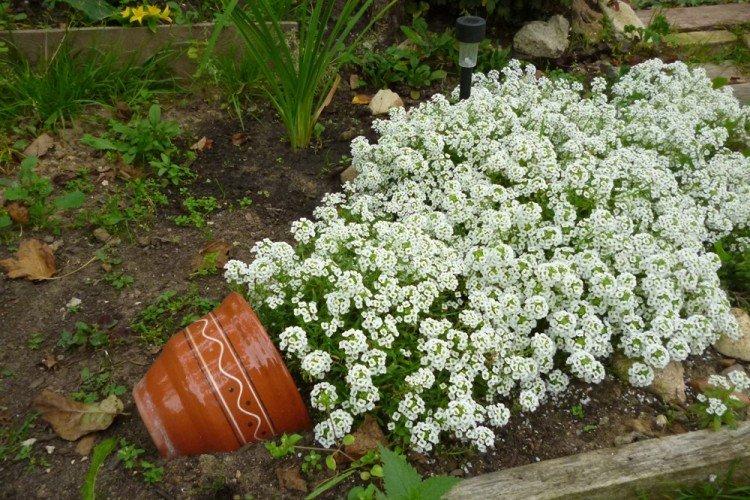
Fertilization and feeding
Alyssum is fed with nitrogen or complex fertilizers under the root early in the morning. But select specific additives strictly for your varieties. Annual alissums are fertilized four times a season, and perennials - twice a year.
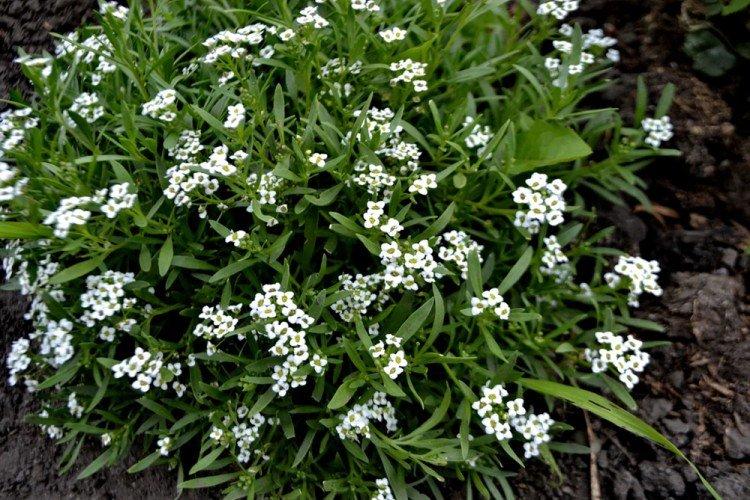
Transplant and reproduction
Alyssum reproduces equally well by seeds and cuttings, but it will not work to divide the root. For the seeds to germinate, it is enough to plant them in suitable soil - and nature will do its job. It is useful to periodically rejuvenate the seedlings, because young bushes bloom much more magnificently and longer than three-year-olds.
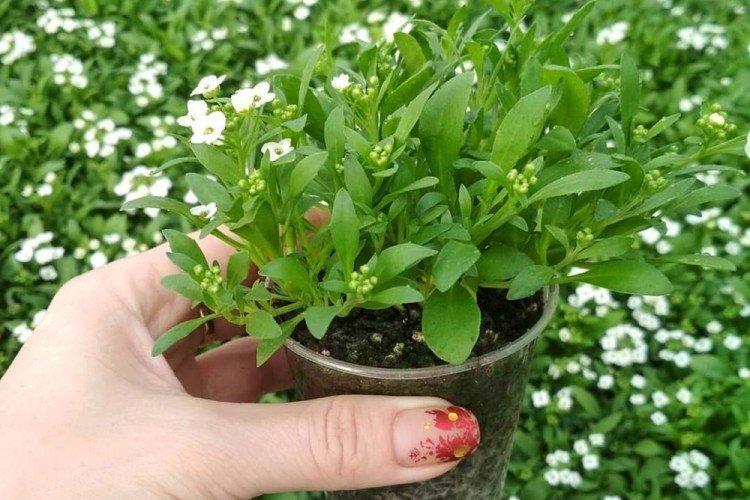
Pruning
In order for the alyssum to be beautiful and bloom violently, it must be cut off. In the spring, cut off all dried, frozen and dying stems with peduncles. The second pruning is at the end of summer, when the alyssum has faded to encourage re-flowering. At this time, you need to shorten all the stems by 5-10 cm.

Wintering
Alyssum tolerates winters normally in mid-latitudes, but dies in frosts from -15 degrees. In order for the flower to winter better, at the end of autumn, cover the seedlings with dry leaves, and in winter cover them with a snowdrift. If it is cold in your region, choose varieties with increased frost resistance.
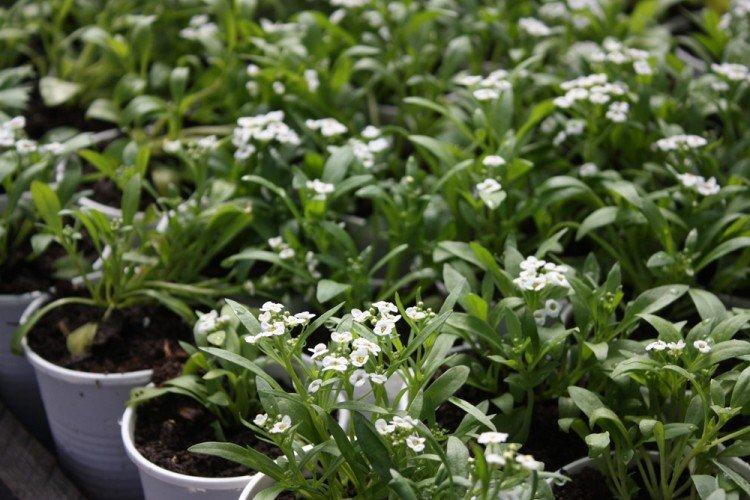
Pest and disease control
If the soil of the alissum is constantly damp and moist, decay processes begin. Late blight or brown rot almost irrevocably affects its roots. It is necessary to remove all damaged areas as soon as possible and spray the seedlings with fungicides.
Another common alyssum disease is powdery mildew or downy mildew. Bordeaux liquid or special medicinal preparations help well from it. But getting rid of the viral mosaic is impossible, so diseased plants will have to be removed.
The main and most dangerous pest of alyssum is the cruciferous flea, which is very difficult to remove. Only the strongest bushes will survive the full vinegar treatment in several passes. Caterpillars, moths and cabbages also spoil flowers, but they are easier to deal with.
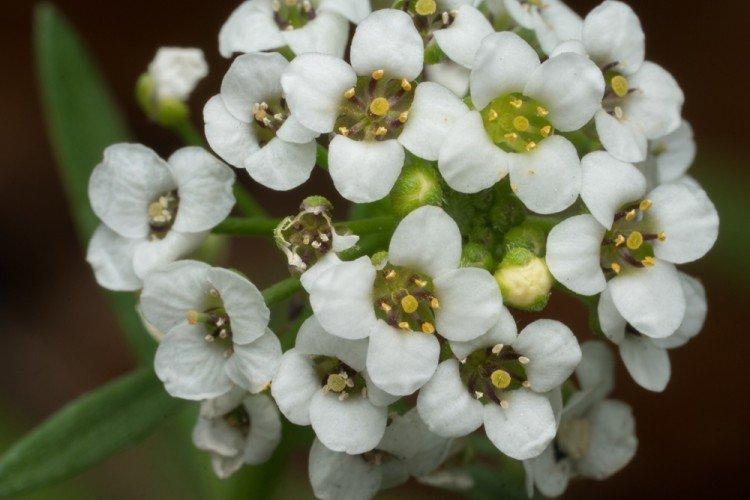
Alyssum - photo
Beautiful and decorative alissums will become a real decoration of your garden. Just look at the photos, how good and effective they are!
